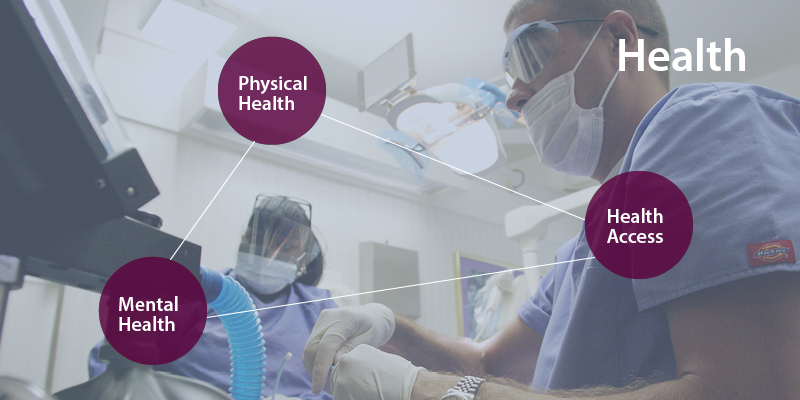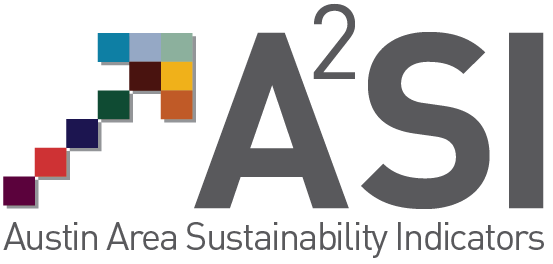Health
Promoting healthier communities is enhanced by data on the health status of the population and information on a range of factors that can influence health outcomes. The health section identifies critical trends in the health and well-being of Austin area residents. Within a sustainability view, people’s basic personal needs, such as health, must be at the core of a sustainable region. It is difficult to focus on environment, equity, and civic engagement if people’s basic health needs are not satisfied. As we will see in this section, health indicators in the Austin area are highly dependent on social, economic, and geographic factors. Some key health indicators include: access to healthcare; physical health; mental health; and dental health.

Key Indicators
Physical Health
In 2018, nearly 86% of Austin Area residents agree or strongly agree that their health is good. This is a 20% increase from previous years. Hays, Williamson and Travis counties have slightly higher percentages of people reporting good health, whereas Caldwell County has nearly 20% of residents reporting poorer health.
Disparities in Health Insurance Access
Although access to health insurance has improved since the passing of the Affordable Care Act, many Austin Area residents still go without it. High uninsured rates persist in Caldwell County, as well as among Hispanic (35%) and Black (33%) residents.
Ratio of Primary Care Providers
Bastrop and Caldwell counties continue to have fewer primary care physicians than the state as a whole, or other counties in the Austin Area. The state and federal government have identified Bastrop and Caldwell as having an acute shortage of primary health care personnel.
Availability of Healthcare
Approximately 22% of black, 18% of hispanic, 11% of white, and 23% of other race/ethnicity report some kind of barrier to health care. Nearly 53% of Austin Area residents making less than $55,000 a year do not receive paid sick leave benefits, and rural residents report limited access to specialty medical care because of cost, availability, or accessibility.
Dental Health
According to the 2018 A2SI Community Survey, approximately 27% reported not geting dental because of cost, availability, or accessibility.
Life Satisfaction
31% of Austin Area residents rate their quality of life as an 8 (out of 10). The ratings generally improve across higher socioeconomic status categories.
Thinking about the health section, some questions to consider:
- What is the relationship between economic indicators, access to insurance, and health and well-being related outcomes?
- As an increasing population of the Austin area ages, what are the implications for the health trends?
- How can we continue to provide for and expand critical health services in the Austin area?
